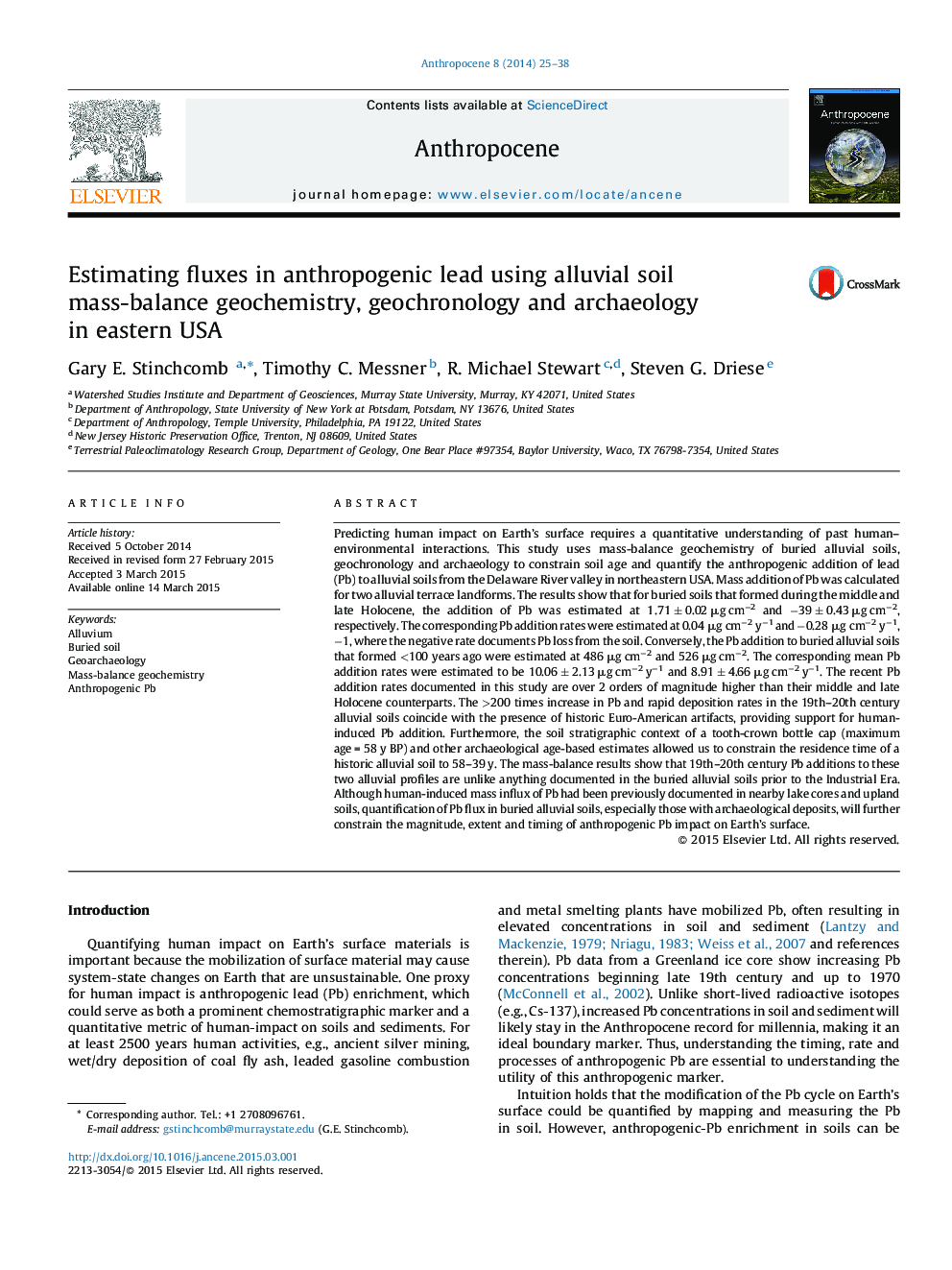| کد مقاله | کد نشریه | سال انتشار | مقاله انگلیسی | نسخه تمام متن |
|---|---|---|---|---|
| 4461875 | 1621517 | 2014 | 14 صفحه PDF | دانلود رایگان |
Predicting human impact on Earth's surface requires a quantitative understanding of past human–environmental interactions. This study uses mass-balance geochemistry of buried alluvial soils, geochronology and archaeology to constrain soil age and quantify the anthropogenic addition of lead (Pb) to alluvial soils from the Delaware River valley in northeastern USA. Mass addition of Pb was calculated for two alluvial terrace landforms. The results show that for buried soils that formed during the middle and late Holocene, the addition of Pb was estimated at 1.71 ± 0.02 μg cm−2 and −39 ± 0.43 μg cm−2, respectively. The corresponding Pb addition rates were estimated at 0.04 μg cm−2 y−1 and −0.28 μg cm−2 y−1, where the negative rate documents Pb loss from the soil. Conversely, the Pb addition to buried alluvial soils that formed <100 years ago were estimated at 486 μg cm−2 and 526 μg cm−2. The corresponding mean Pb addition rates were estimated to be 10.06 ± 2.13 μg cm−2 y−1 and 8.91 ± 4.66 μg cm−2 y−1. The recent Pb addition rates documented in this study are over 2 orders of magnitude higher than their middle and late Holocene counterparts. The >200 times increase in Pb and rapid deposition rates in the 19th–20th century alluvial soils coincide with the presence of historic Euro-American artifacts, providing support for human-induced Pb addition. Furthermore, the soil stratigraphic context of a tooth-crown bottle cap (maximum age = 58 y BP) and other archaeological age-based estimates allowed us to constrain the residence time of a historic alluvial soil to 58–39 y. The mass-balance results show that 19th–20th century Pb additions to these two alluvial profiles are unlike anything documented in the buried alluvial soils prior to the Industrial Era. Although human-induced mass influx of Pb had been previously documented in nearby lake cores and upland soils, quantification of Pb flux in buried alluvial soils, especially those with archaeological deposits, will further constrain the magnitude, extent and timing of anthropogenic Pb impact on Earth's surface.
Journal: Anthropocene - Volume 8, December 2014, Pages 25–38
